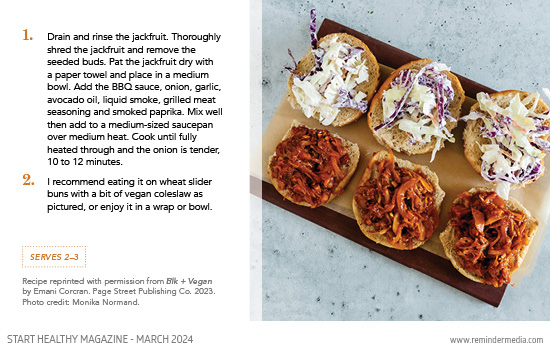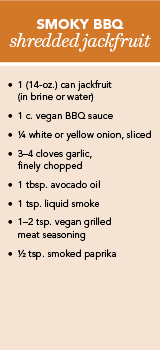Spring is a season of renewal, making it a great time to refresh and revitalize your routines and overall health. This issue of Start Healthy is here to help with a closer look at the benefits of local garden centers, strategies for improving your sleep, a deep dive into all things cholesterol, and two delicious plant-based dishes.
Located in Mechanicsburg, Pennsylvania, Ashcombe Farm and Greenhouses is not just a garden center but a cherished community institution with a rich history. Part owner Kerri Laudig provides insights into what makes Ashcombe so unique, including its commitment to local growing and various perennial offerings that make it a year-round destination.
Tired of sleep troubles? Explore the idea of sleep syncing, a practice that involves aligning your sleep patterns with your daily routine to improve your quality of rest and overall energy levels. By following the five enclosed tips, you can reset your internal clock and enjoy better zs each night.
Cholesterol is a term frequently heard yet not always fully understood, despite it having a significant impact on our health. The guide in this issue breaks down the two primary types of cholesterol and offers practical tips for maintaining a balanced diet and lifestyle to effectively manage your levels.
Unlock the delectable world of vegan cuisine with two tantalizing recipes from Emani Corcran’s Blk + Vegan cookbook. Start your day with the mango coconut chia seed pudding, then try the smoky barbecue shredded jackfruit for a meatless alternative that’s perfect for sliders or pizza.
Here’s hoping you have a fantastic beginning to spring! As always, it’s a pleasure to send you this magazine.
Kerri Laudig, part owner of Ashcombe Farm and Greenhouses in Mechanicsburg, Pennsylvania, offers a closer look at the history of the garden center and what makes it so unique.
Tell us about how you started at Ashcombe:
I’ve been with Ashcombe for nearly twenty-seven years. I started working here part-time when I was in school, but I moved into a full-time retail position when I finished college in 1997. I’m now part owner and manage our gift shop and plant areas, including the houseplants, vegetables, herbs, and annuals.
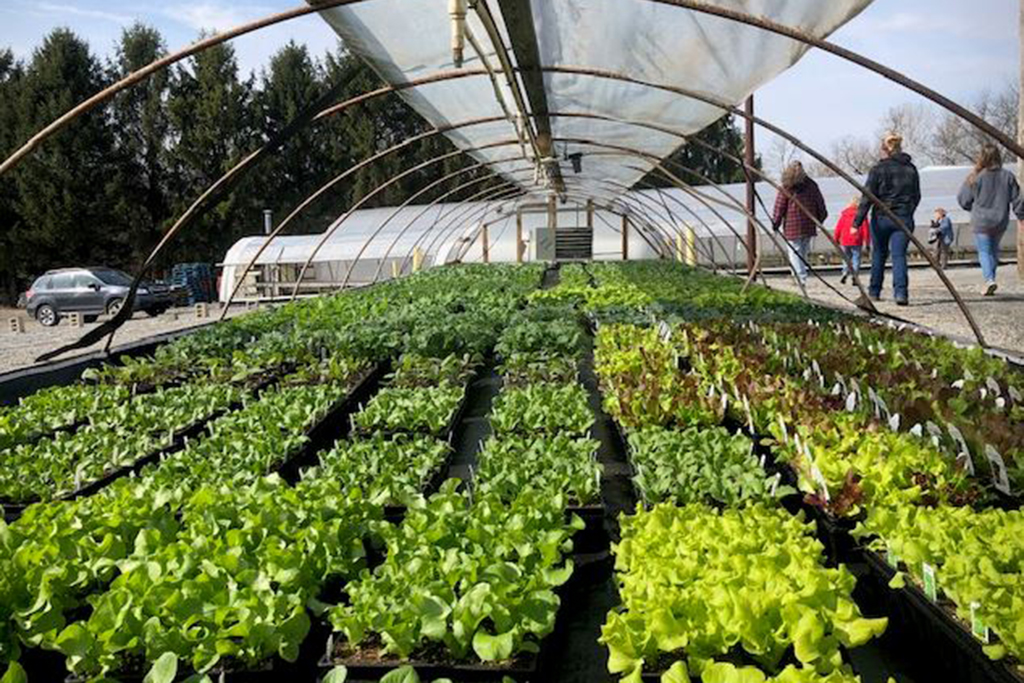
How has Ashcombe grown over the years?
Ashcombe began in 1962 as a roadside vegetable farm. Our founder, Glenn Gross, was an innovator who wasn’t afraid to try something new. He always listened to his customers, which led him to expand the business and what it had to offer. Over the years, we’ve added hundreds of plants to the mix and are now a premier garden center and staple in the community here in Mechanicsburg. We’re a family-oriented business that provides not only a wealth of knowledge and quality products but also an unmatched shopping experience.
What’s your favorite thing Ashcombe now offers?
I help a lot with Fern, an old mini school bus we converted into a mobile plant shop in 2021. From the design, purpose, and merchandise, I’ve been involved with it all. I’m often with Fern on her outings, and I love getting to talk to people in the community and show her off. It’s fun and different from the usual day-to-day, and people are always happy to see us when we’re out and about.
How has community support helped the business?
Glenn was always a people person; he was interested in their stories, and in turn, people were interested in ours. Our customers span generations and often talk about coming to Ashcombe with their mothers and grandmothers when they were younger. We suffered a devastating fire in 1989 that destroyed the retail store, but we continued business in our parking lot while we rebuilt. Our community supported us through all of it.
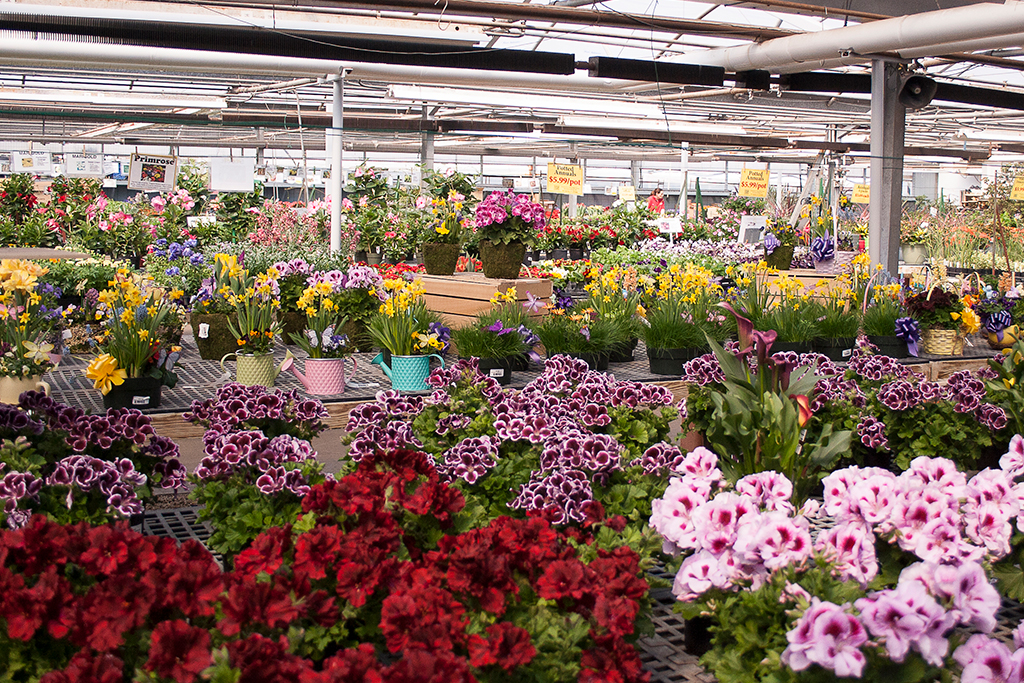
What are some of the benefits of buying directly from a local grower?
Plants and produce from local growers are going to flourish more than those from bigger stores would because they aren’t being shipped across the county, making them far less likely to already be struggling before you can even get them home. Just as important, buying small keeps the local economy healthy. The support helps us employ people from within the community and fundraise and donate toward areas like our fire department and youth sports programs.
Tell us about your “From seed to sale” slogan:
What sets us apart from other garden centers and big-box stores is that we largely grow in-house. We employ several full-time and seasonal growers who plant all our annuals, veggies, herbs, and hanging baskets. We put a lot of care into each of our products, and we’re able to grow high-quality items because of it. I think that’s part of what’s kept us ahead of the rest for so long. We always carefully choose, plant, and maintain our plants every season, and it really shows.
Unlike a lot of greenhouses, Ashcombe stays open year-round. How do you adapt to different seasons?
Naturally, spring is our busy season, and we’re lucky to have many team members who return every year to help us with the rush. But unlike other garden centers that close after spring, we have a variety of offerings beyond plants that keep customers coming during nonpeak months. Our themed gift shop, seasonal craft classes, and café and bakery make us more of a destination spot rather than just a “store.” We’re always changing what we offer so we can continue to delight people year-round.
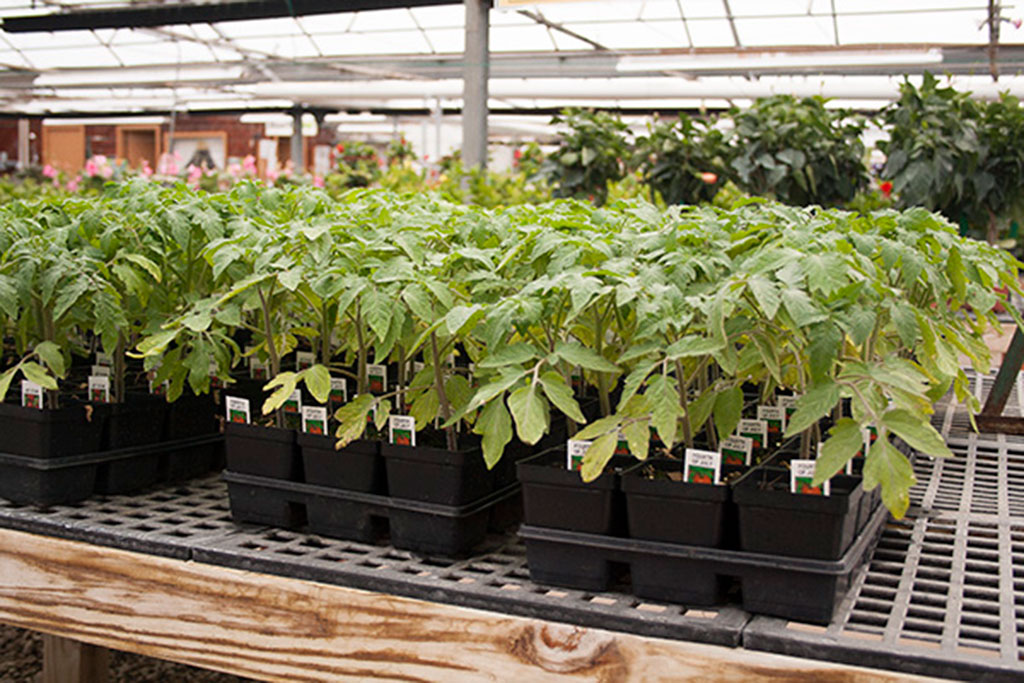
With spring right around the corner, what advice would you give to people who are ready to start their gardens?
Early spring is the best time to begin planning your garden, so start shopping for your seasonal seeds and gathering the different tools you’ll need now. I always recommend that people look through gardening catalogs to get inspired. Some of the first things to plant in March are pansies and early veggies like broccoli, lettuce, onions, and potatoes.
However, don’t feel obligated to grow any of those if you don’t want to. It’s important to plant the things your family loves—though it never hurts to throw something new into the mix. For instance, sunflower seeds are easy to grow and always give a big show in summer. And remember that while gardening can be a lot of trial and error, it’s worth it in the end due to the physical and mental benefits and because it can help you create new family traditions.
For more info, visit ashcombe.com
Do you have trouble falling asleep or frequently find yourself nodding off during waking hours? If so, you might want to give sleep syncing a try. By aligning your body with your daily routine, you can optimize your sleep-wake cycle for better rest and greater energy.

For the most part, we each have an internal clock that runs on a twenty-four-hour cycle and responds to lightness and darkness, which naturally programs us to sleep at night and be alert during the day. However, nobody’s is exactly the same—some people are night owls who tend to stay up longer and rise later in the morning, while others are morning larks who both go to bed and awaken earlier.
The problem is that your body’s natural sleep-wake cycle may not always fit your daily schedule, such as if you work irregular hours; it can also be thrown out of whack by factors like stress and excessive screen time. Any of these issues can lead to symptoms like loss of sleep, insomnia, an inability to concentrate, and difficulty making decisions. For help resetting your internal clock, give these sleep-syncing measures a try.
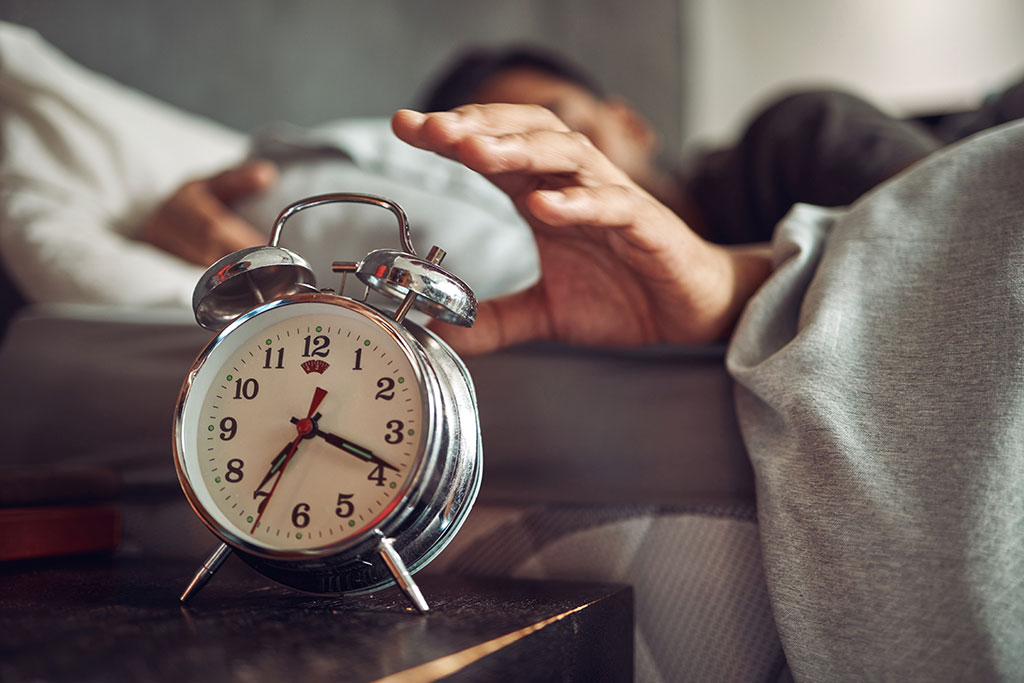
For the best sleep, consistency is critical. Aim to go to bed and get up at the same time every day—even on weekends—striving for the recommended seven to nine hours of sleep. If this requires changing your sleep routine, do so slowly, such as by turning in fifteen minutes earlier every two to three days until you reach your desired bedtime. If you enjoy naps, keep them under twenty minutes and take them earlier in the day to prevent them from impacting your ability to fall asleep at night.

Given that your internal clock is so responsive to light, you’ll want to manage your exposure to it throughout the day. Try enjoying a few minutes of sunlight, either by going outside or sitting by a window, just after waking. This will prompt your body to produce more cortisol, which can help you feel more alert. If you need to get up before sunrise or after dark, you can use a sunrise alarm clock for a similar effect.
Conversely, reduce your exposure to artificial light, such as from your TV, phone, and laptop, two to three hours before bedtime since it can signal to your body that it’s not time to rest yet. If you still have trouble falling asleep, consider wearing a sleep mask or hanging blackout curtains to block distracting light from streetlamps or cars driving by.
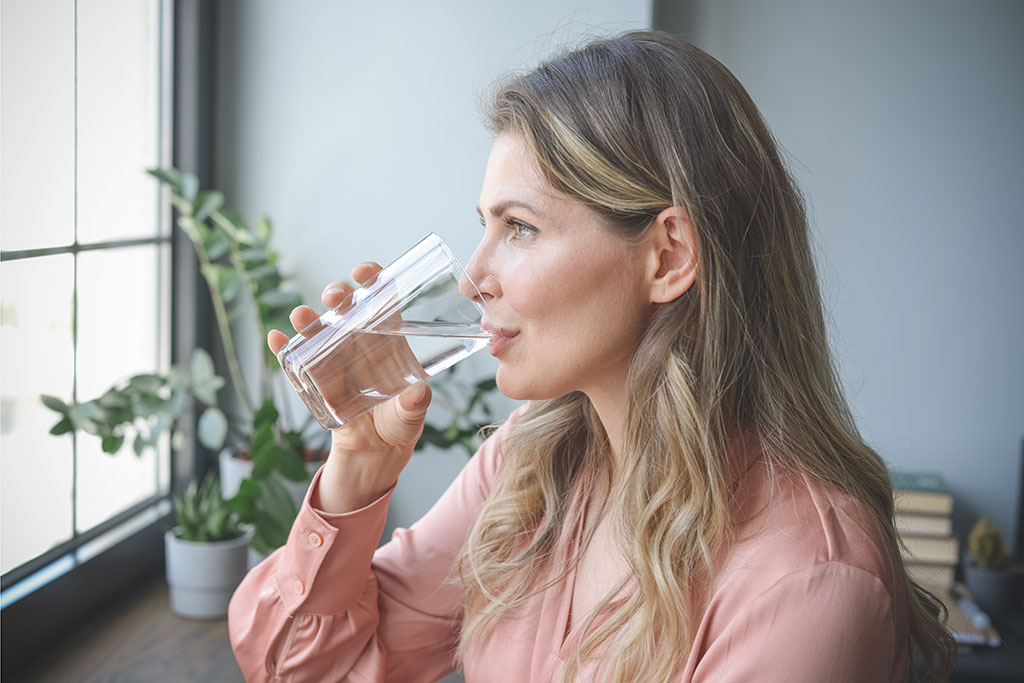
Caffeine can help you avert sleepiness, but it can also lead to insomnia and less refreshing sleep. This stimulant has a half-life of up to five hours, meaning it takes that long for your body to eliminate just half the amount you consume. Even drinking it as distant as six hours before bed can reduce your total sleep time by one hour. Everyone responds to this stimulant differently, but as a general rule, avoid caffeinated beverages after early afternoon, especially if you are sensitive to its effects.

Regular exercise can promote better sleep, including by using up your energy to encourage you to drift off faster, so schedule activity into every day. Try not to exercise just before bedtime, however, as getting your heart rate up when you should be winding down can be counterproductive. But a few stretches or some light yoga before hitting the hay is fine and can even help you relax.

A comforting bedtime routine can go a long way toward getting you mentally and emotionally prepared for sleep. So put on a soothing lotion, enjoy some light reading, or sip a warm cup of noncaffeinated tea, and let yourself enjoy a bit of quiet time before settling into bed.
It’s not always easy to get the rest you need. But if you listen to your body’s cues and stay mindful of how your habits are impacting your sleep-wake cycle, you might find yourself sleeping like a baby in no time.
*If these simple modifications to your daily routine don’t improve your sleep, consider reaching out to your doctor.
The term “cholesterol” appears frequently in everyday life, potentially confusing the average American as much as it concerns them. The Nutrition Facts label of every food and drink mentions it, products advertise themselves as “low cholesterol” or “good for cholesterol,” and doctors encourage patients to have their blood tested regularly to check their cholesterol levels. But what exactly is cholesterol, and what does it mean for our health?
Take a look at the facts beyond the figures to help make sense of this significant health factor. Armed with this knowledge, you can take control of your body’s cholesterol levels and lead a healthier lifestyle.

In a nutshell, cholesterol is a waxy, fatty compound that runs through your bloodstream. As unpleasant as that may sound, though, this substance does play a role in your body’s functions. For example, it is used to make steroid hormones like estrogen and testosterone. However, it is potentially harmful in excess, depending on the type: low-density lipoprotein (LDL) or high-density lipoprotein (HDL).
LDL is considered “bad cholesterol” because it builds plaque, or harmful, fatty deposits that can accumulate in the blood vessels, narrow arteries, and reduce blood flow to the heart. “These issues can lead to serious and potentially life-threatening emergencies such as heart attacks or strokes if left unmanaged,” says Dr. Joel Evans, chief of medical affairs at the Institute for Functional Medicine. Meanwhile, HDL is considered “good cholesterol” because it attaches to bad cholesterol and plaque in the bloodstream and transports it to the liver, where it is then flushed out of the body.
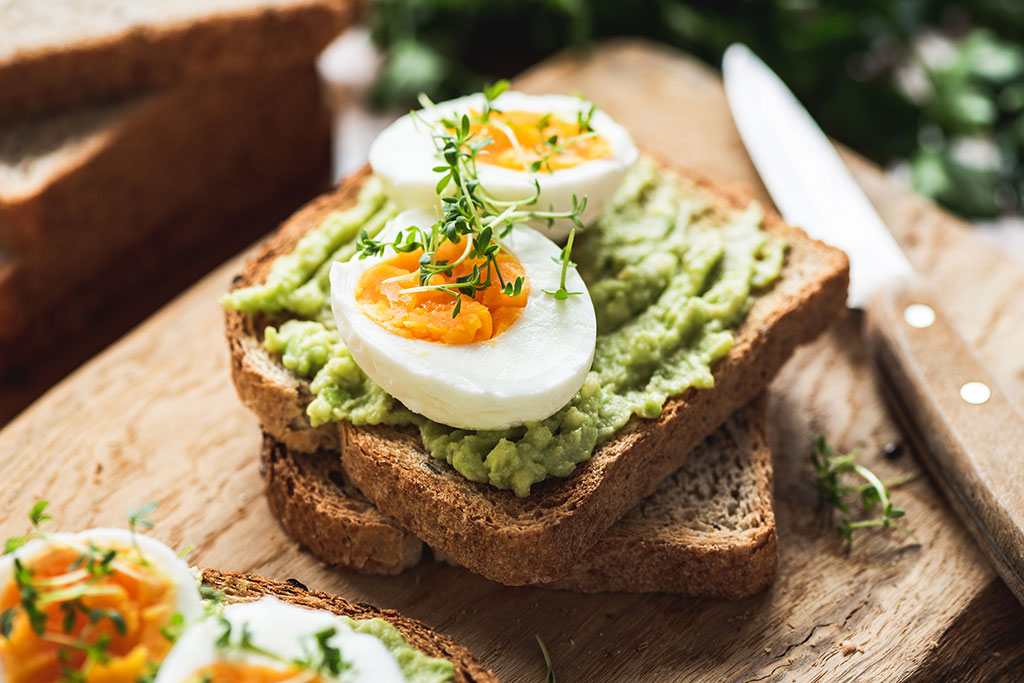
While your liver actually produces all the cholesterol your body needs, you obtain additional quantities from the foods you eat, specifically from fats. In general, your body needs fat to develop cells, grow tissues, and boost levels of other nutrients like vitamin D, making it a crucial element of your diet. Just like with cholesterol, though, there are “good” and “bad” fats, and the types and quantities you consume directly affect the balance of cholesterol in your blood.
Unsaturated fats
These healthy nutrients promote HDL cholesterol and can help prevent disease. They are derived from the natural oils in foods such as olives, nuts, seeds, and fish. Some of the best unsaturated fats to eat in moderation are omega-3 fatty acids, which are found in fish like salmon, sardines, and mackerel.
Saturated fats
Considered less healthy, the fats in this category are derived from red meat, high-fat dairy foods like cheese, and sweets like ice cream. Because saturated fats can raise LDL cholesterol, consume them sparingly and replace them with unsaturated ones as often as possible. For example, you could use olive oil rather than butter when sautéing vegetables.
Trans fats
As harmful as saturated fats may be, trans fats can cause even more damage—in fact, they have the double-negative effect of contributing to higher levels of LDL cholesterol while also reducing your HDL levels. Consequently, they are the only ones that researchers and physicians recommend eliminating from your diet entirely. Most trans fats are processed by solidifying hydrogen-infused vegetable oil and are incorporated into foods like potato chips and french fries as a preservative and flavor additive. However, trans fats can also form naturally in some meat and dairy foods.
It may be difficult to remember which fats to eat and which to avoid. As you review your dietary choices, try using this simple mnemonic device:

It’s important for all adults to know their cholesterol levels, given this substance’s close connection to multiple cardiovascular diseases. According to the health-and-wellness website Everyday Health, a whopping 40 percent of Americans are living with high cholesterol, and many may not even be aware of their status. People with certain conditions, such as diabetes and kidney disease, need to be especially mindful of how they measure up.
To get tested, simply schedule a wellness exam with your primary care doctor and mention your cholesterol concerns. Your doctor will likely order a blood test known as a lipid panel, which will evaluate your blood for HDL and LDL cholesterol as well as triglycerides, another potentially harmful fat for your cardiovascular system.
According to Johns Hopkins Medicine, the average adult should fall into these ranges, measured in milligrams per deciliter (mg/dL):
You may be concerned if your doctor reports that you fall outside these healthy ranges. (If you are told you have “high cholesterol,” this usually means you have too much LDL cholesterol, not enough HDL, or both.) However, there are several steps you can take to address your levels.
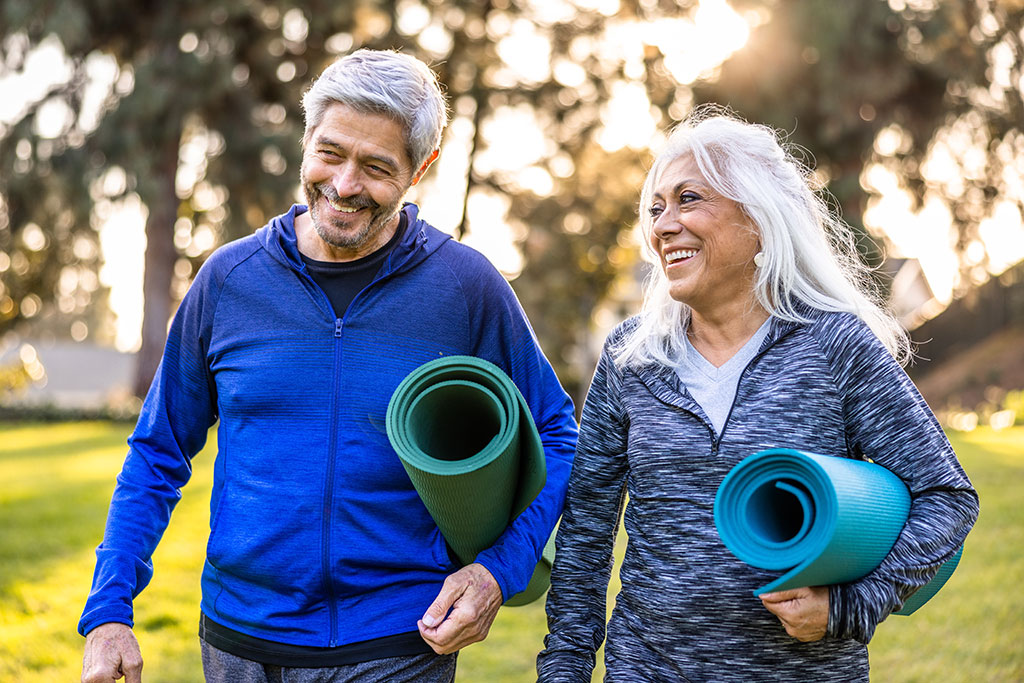
While many serious health issues are difficult to control or are even beyond our control, cholesterol is comparatively manageable. “Reduce stress, exercise, drink water, sleep, get enough healthy protein, don’t eat a lot of fatty foods or high-fat dairy, and eat a lot of omega-3 foods,” Dr. Evans says. Note that most of these steps involve making dietary changes. You should also avoid smoking because tobacco products reduce HDL cholesterol.
In addition, you may be at greater risk of high cholesterol based on other factors, such as if you live a stressful lifestyle, have a family history of conditions like diabetes, or are at an advanced age. Regardless, by following the above recommendations, you can still take impactful steps to manage your cholesterol levels and, in turn, transform numerous aspects of your life.
*If you have any concerns about your cholesterol levels, talk to your doctor.
For a culinary journey that proves you can savor your favorite meals while embracing a vegetarian or vegan lifestyle, look no further than these recipes from the Blk + Vegan cookbook. Each offers a fresh, innovative twist on traditional flavors, providing both a delightful treat for your taste buds and a boost for your health.
This pudding is filled with vibrant mangos and coconut, creating a scrumptious breakfast treat that makes meal prep easy.
Indulge in the comfort of classic barbecue with this meatless recipe that’s perfect for loading onto sliders, pizza, or any dish in need of a savory touch.
Reprinted with permission from Blk + Vegan by Emani Corcran. Page Street Publishing Co. 2023. Photo credit: Monika Normand.
recipe by emani corcran
photos by monika normand
Mango and coconut have my heart. Adding these flavors to a chia seed pudding just increased my love for a good chia seed pudding. This is super meal prep-able, not to mention the perfect breakfast to wake up to.
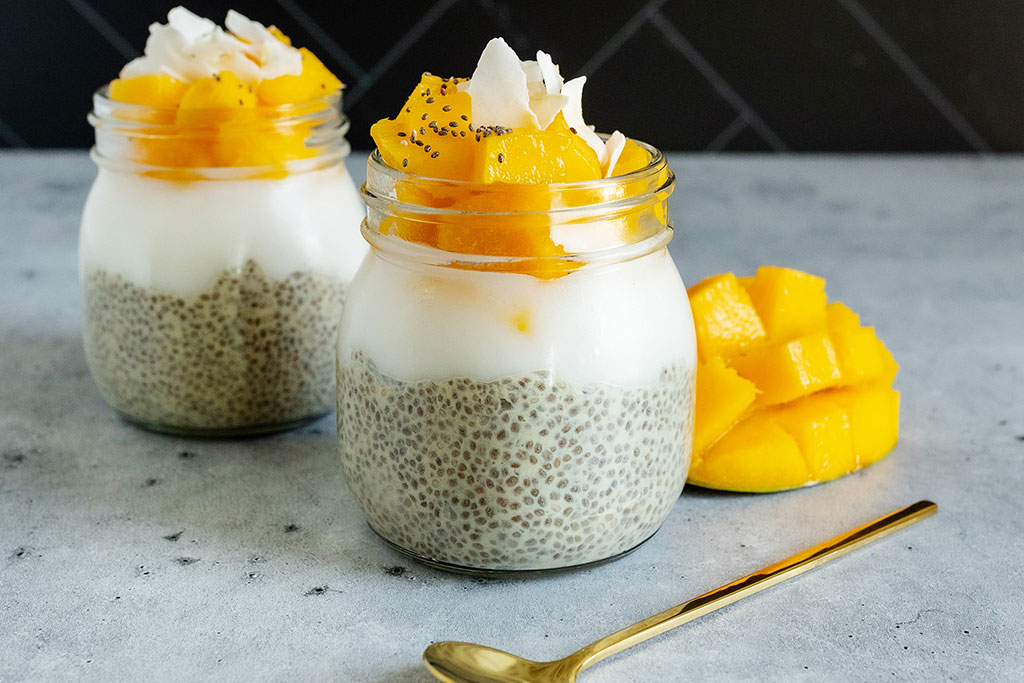
Serves 4
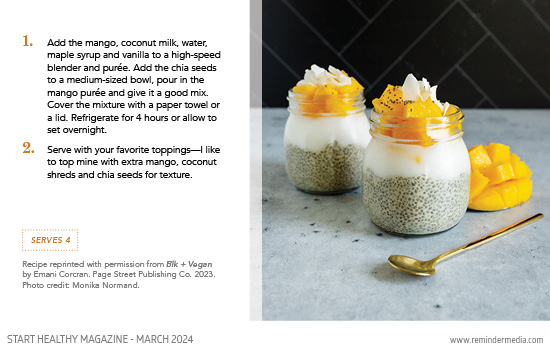


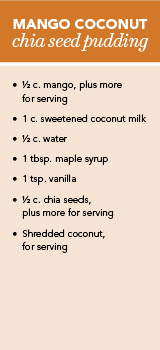
recipe by emani corcran
photos by monika normand
Growing up, baked barbeque chicken was a huge staple in my home because it was so quick and easy to make. Now, for me to get that same feeling as a vegan, I make this delicious Smoky BBQ Shredded Jackfruit. If you have never had jackfruit before, you’re in for a real treat; the texture is incredibly similar to that of shredded chicken breast! I use this recipe for loaded jackfruit sliders, pizzas and almost anywhere a good piece of chicken belongs.
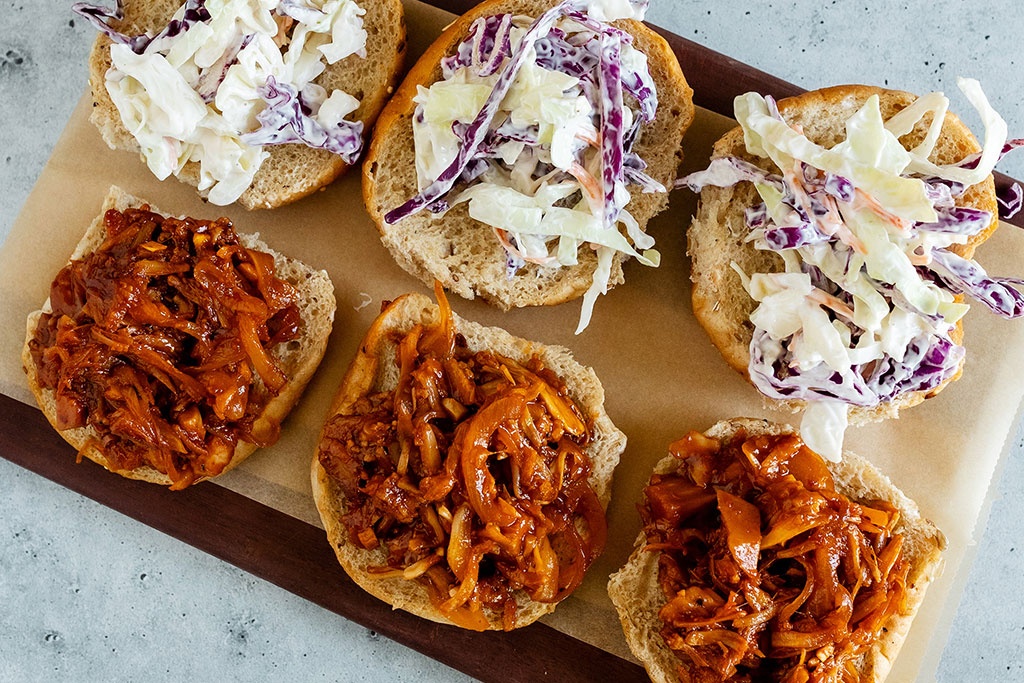
Serves 2–3
